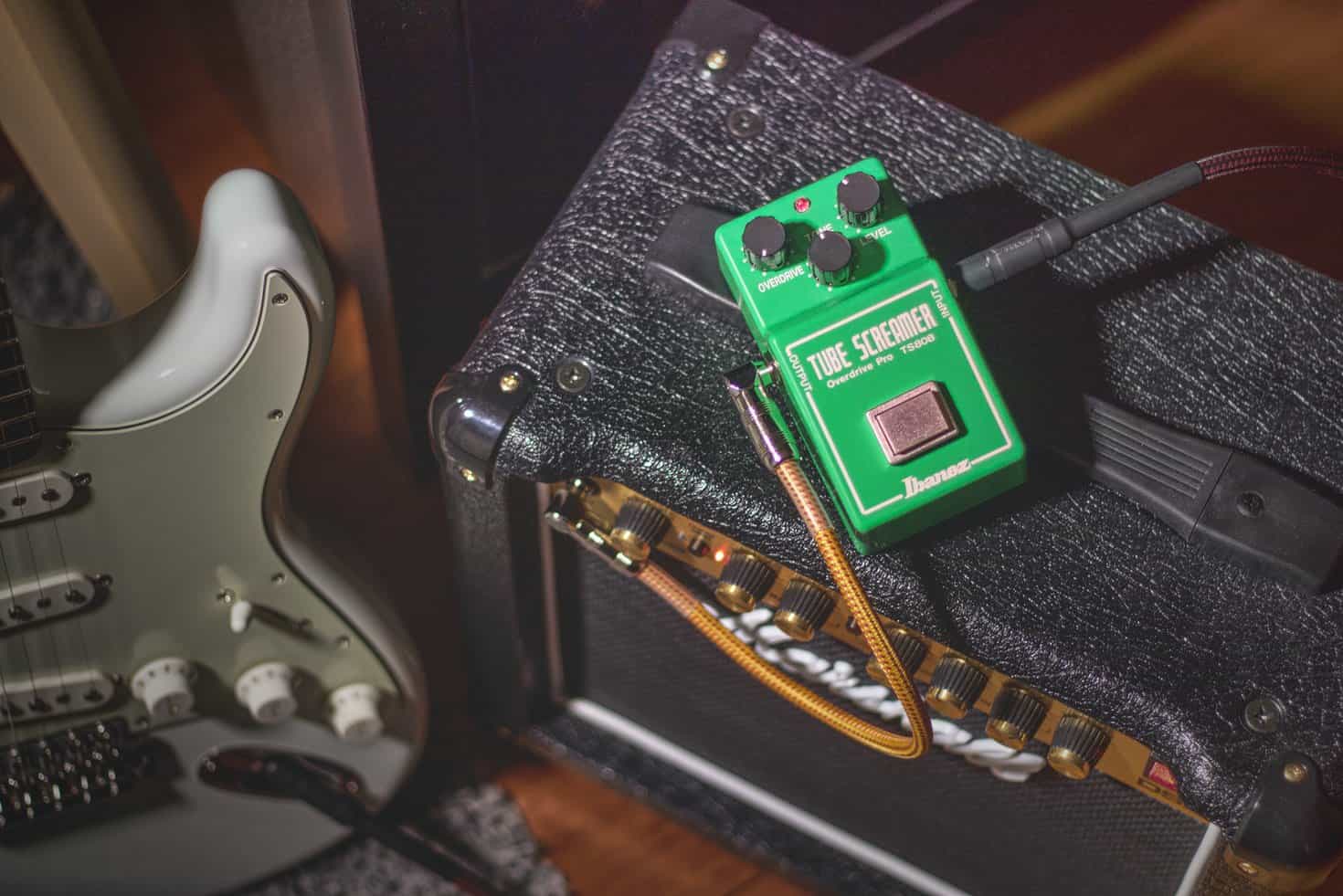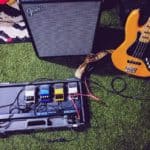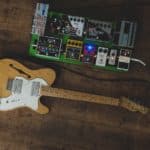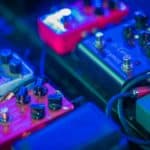Pedals are handy tools that alter the sound of the guitars.
Having just one allows for reaching new horizons of tones and effects.
What’s more interesting still is when one stacks more than one pedal one after the other.
Suddenly, a guitarist can have a chain of pedals and effects that help to create memorable melodies.
However, it is not difficult to get lost in the order.
Which one should go first? What pedal comes after this one, and which comes before that other?
It can be really messy to put them in the proper order.
While there are no real rules and you can accommodate them in the way you prefer, there are certain orders that are more common than others.
Let’s take overdrive and distortion, for instance.
Which comes first, and why?
Generally, one should use an overdrive pedal before distortion. By putting the overdrive first, you are sending a cleaner, more nuanced signal, that otherwise would be lost. Putting your overdrive after the signal is distorted will most likely make it impossible to distinguish the particular warmth it adds.
Let’s keep reading to find out more info regarding this topic.
What is gain stacking?
Gain stacking is when someone uses or “stacks” more than one pedal that adds gain to the signal, whether it be compressors, distortions, overdrives, etc.
Gain stacking happens too when the gear has preamps, for example.
This technique requires setting each pedal at a specific configuration for everything to sound perfect.
Should you put your overdrive pedal before or after a distortion pedal?
In most cases, overdrive pedals come before distortion.
Putting distortion first makes the overdrive almost useless.
That is to say, the impact the overdrive creates is hard to notice.
It is worth mentioning that there are no wrong ways to stack pedals.
In fact, one could experiment and find out incredible results.
But overdrives are used generally to add a certain warmth and saturation to the tone that gives it character.
That character will be probably lost if added after the signal has been completely destroyed.
Should you put your overdrive pedal before or after amp distortion (FX loop)?
Generally, the overdrive pedal goes before amp distortion.
Overdrives send both rather clean and strong signals, and the distortion happens within the amp.
Depending on the amp’s characteristics, it will sound either one way or the other.
For instance, if the amp has an even or smooth distortion, then the results will be smooth.
What’s great about putting overdrive or distortion pedals into FX loops is that when the pedals have a pretty strong character, bypassing the amp’s preamp can drastically improve the final sound.
I recommend you watch this video where Ola Englund uses an infamous Metal Zone distortion pedal through the FX loop of the amp.
The result is fascinating!
What happens if you switch the order around?
Some prefer putting amp distortion before overdrive and that’s totally fine.
It always depends on what sound the guitarist is trying to get.
However, if you change the order, then forget about getting a smoother, controllable sound.
Having a distortion pedal first will increase distortion drastically, and most musicians prefer having a slightly distorted tone.
Once again, this will depend on the exact sound you are looking for.
If you just want to use the overdrive pedal as a gain boost, then the order would probably not matter.
However, if you intend on using the overdrive as a way to add color to your tone, apart from gain, then I think it should really come first.
Is it normal to stack overdrive and distortion?
Gain stacking overdrives and distortion is a rather common combination.
In fact, they are a standard fusion for metal genres, because using them both together will increase the amount of gain.
For them to work properly, it is key to pay attention to the dials in the control settings so they can complement each other.
Otherwise, if the distortion is too high, then the overdrive will be futile.
What is more, players tend to stack distortion and overdrive because they add compression and affect the EQ, balancing bass, treble and mid frequencies.
At what point of the signal chain should overdrive and distortion be used?
Most often than not, overdrive, distortion, or any pedal that amplifies noise, should be at the beginning of the signal chain.
If, on the contrary, one puts them later on in the signal path, then they amplify all the noise that comes before them.
This would make a huge mass of sound that would be impossible to control.
To give you a clear example, if you put distortion after a delay pedal, the echoes from the delay will be distorted, and that’s not what most players want to happen.
It could, however, be something interesting to experiment with if you want to generate a noisy ambiance.
How to set up the controls of stacked overdrive and distortion pedals?
Here are some tips for stacking overdrive and distortion properly.
You ought to take a step-by-step approach so you get a proper setup.
First, get the volume at the number you usually play with.
Then, without changing or setting up anything, add the overdrive.
It is time for you to start playing and adjusting everything from your amp pedal.
See what suits you the best.
As soon as you are done, set the fx pedal and bring up the volume until you reach unity.
Both amp and pedal should have the same volume.
Now, tweak the tone controls until you reach a sound that suits your playing.
Once it is done, you can add the overdrive and set it up the way you like it.
One last tip to bear in mind regarding volume:
The pedal that has the overall control over it is the second one.
So, controlling the volume on the first amp will not increase or decrease the volume itself, but it will increase the gain due to the louder signal reaching the second pedal.

Hello there, my name is Ramiro and I’ve been playing guitar for almost 20 years. I’m obsessed with everything gear-related and I thought it might be worth sharing it. From guitars, pedals, amps, and synths to studio gear and production tips, I hope you find what I post here useful, and I’ll try my best to keep it entertaining also.





